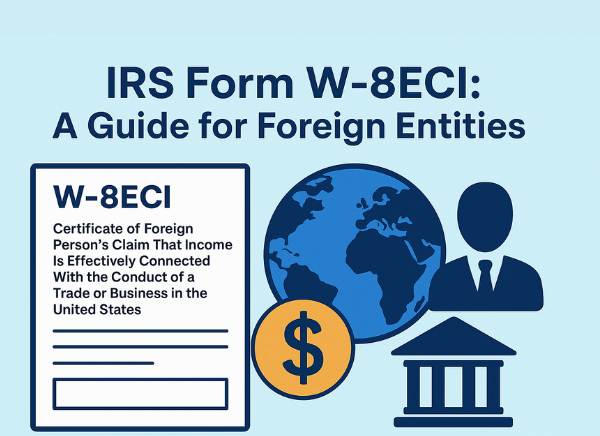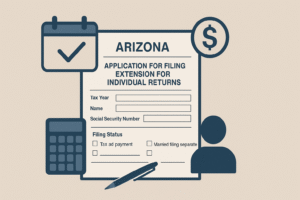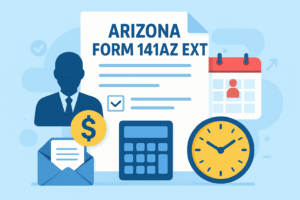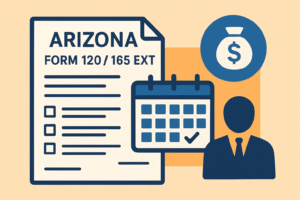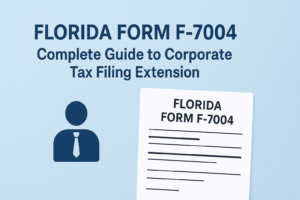Foreign individuals and entities that generate income from U.S. sources must navigate a range of tax forms to stay compliant with Internal Revenue Service (IRS) requirements. One of the most important documents in this category is IRS Form W-8ECI, officially titled Certificate of Foreign Person’s Claim That Income Is Effectively Connected With the Conduct of a Trade or Business in the United States.
This form plays a critical role in determining whether certain U.S.-sourced income should be taxed under the rules of Effectively Connected Income (ECI) rather than being subject to withholding under Fixed, Determinable, Annual, or Periodical (FDAP) income rules.
In this guide, we’ll cover what Form W-8ECI is, who needs to file it, how to complete it step by step, and how it differs from other related forms like the W-8BEN.
What is Form W-8ECI?
Form W-8ECI is a tax document that foreign individuals or entities must submit to their U.S. withholding agent or payer to certify that their income from U.S. sources is effectively connected with the conduct of a trade or business in the United States.
Instead of having tax withheld at the flat 30% FDAP rate, the income is taxed under ECI rules at the same graduated rates that apply to U.S. persons.
Key points about Form W-8ECI:
- It is not filed directly with the IRS but given to the withholding agent (such as a U.S. bank, broker, or business).
- It prevents unnecessary withholding at source.
- It allows the foreign entity or individual to be taxed based on net income after allowable deductions, rather than gross income.
What is the Difference Between Effectively Connected Income (ECI) and FDAP Income Taxation for Non-Alien Residents?
The IRS distinguishes between two main types of U.S.-sourced income for foreign persons:
1. Effectively Connected Income (ECI):
- Income that arises from a trade or business conducted within the U.S.
- Taxed at the same graduated rates as U.S. residents.
- Filers can deduct related business expenses.
- Examples: Profits from operating a U.S. branch, rental income if connected to a U.S. business, and services performed in the U.S.
2. Fixed, Determinable, Annual, or Periodical (FDAP) Income:
- Includes passive income such as dividends, interest, royalties, or certain rents.
- Subject to a flat 30% withholding tax (or a lower treaty rate, if applicable).
- No deductions allowed.
In short:
- ECI = taxed like a U.S. taxpayer (net income basis).
- FDAP = taxed at 30% withholding (gross income basis).
Form W-8ECI ensures your income is classified as ECI instead of being automatically treated as FDAP.
Who Needs to Submit Form W-8ECI?
You should submit Form W-8ECI if you are:
- A foreign individual earning income that is effectively connected with a U.S. trade or business.
- A foreign corporation with a U.S. branch or business activity.
- A partnership with income linked to U.S. activities.
- A trust or estate deriving U.S. trade or business income.
Example situations:
- A Canadian consulting company providing services to U.S. clients.
- A German manufacturer selling goods through a U.S. warehouse and sales office.
- A foreign landlord renting out U.S. commercial property as part of an active business.
How Often Do You Need to Submit a Form W-8ECI?
- Generally, a Form W-8ECI remains valid until the last day of the third calendar year after the year in which it was signed.
- Example: If you sign on July 1, 2025, the form remains valid until December 31, 2028.
- You must submit a new form if:
- Any information changes (e.g., address, U.S. tax ID, entity classification).
- The validity period expires.
- Requested by the withholding agent.
Failure to keep an updated W-8ECI can cause withholding agents to apply the 30% FDAP withholding rate.
What is a Beneficial Owner?
The beneficial owner is the person or entity that is the actual owner of the income for U.S. tax purposes. This is important because only the beneficial owner can claim treaty benefits or income classification as ECI.
- For individuals: the person who earns and controls the income.
- For entities: the company, trust, or partnership that has the right to the income.
A nominee, agent, or custodian is not the beneficial owner.
How to Fill Out Form W-8ECI: Line by Line Instructions
Here’s a step-by-step breakdown of the form:
Part I — Identification of Beneficial Owner
Line 1 — Name. Enter the name of the beneficial owner (the person/entity that owns the income). If the payment account is in a single-owner disregarded entity’s name, the foreign owner completes/signs the form; you may add the disregarded entity’s name on line 3. For joint owners, every foreign co-owner must provide a W-8ECI; if any co-owner gives a W-9, the payment is treated as to a U.S. person.
Line 2 — Country.
- Entities: country of incorporation/organization (the law you’re organized under).
- Individuals: your country of tax residence.
Line 3 — Disregarded entity (if any).
If a disregarded entity will receive the payment, you may enter its name here (helpful to the payer). Don’t put disregarded-entity info elsewhere on the form (except line 9 for reference numbers). The owner’s info belongs on the form.
Line 4 — Type of entity.
Check one box (Individual, Corporation, Partnership, Simple/Grantor/Complex trust, Estate, Private foundation, Tax-exempt organization, International organization, Central bank of issue, Foreign Government—Integral Part or Controlled Entity). “Foreign government” is split into Integral Part vs Controlled Entity (see Temp. Reg. §1.892-2T if unsure).
Line 5 — Permanent residence address.
Your tax residence address (no P.O. box or “in care of” unless it’s the registered address and there’s no other address in that jurisdiction). If you’re an individual with no tax residence, use where you normally live; for entities with no tax residence, use the principal office.
Line 6 — U.S. business address.
Your U.S. business address (no P.O. box or “in care of”).
Line 7 — U.S. TIN (required).
Check the type and enter your SSN, ITIN, or EIN. A U.S. TIN is required for the form to be valid.
- Individuals usually enter an SSN; if not eligible, obtain an ITIN (Form W-7).
- Entities (or individuals with a sole-prop U.S. business) may need an EIN (Form SS-4).
- If you are a disregarded entity, enter the owner’s U.S. TIN.
Line 8a — FTIN (Foreign tax identifying number).
If you’re documenting yourself as an account holder of a financial account at a U.S. office of a financial institution and receive U.S.-source income reportable on Form 1042-S, you generally must provide your FTIN, unless you: (1) are a government/central bank/international organization, (2) are a resident of a U.S. territory, or (3) live in a jurisdiction on the IRS “No FTIN” list.
Line 8b —
Check if FTIN not legally required. If your jurisdiction doesn’t issue FTINs or doesn’t legally require you to obtain one, check this box to explain why line 8a is blank (you can optionally add a written explanation).
Line 9 — Reference number(s). Optional—useful to the payer (for example, account number, contract number, or internal ID) so they can match your form to the right account/payment.
Line 10 — Date of birth (MM-DD-YYYY). Required only when you’re documenting yourself as an account holder of a financial account at a U.S. office of a financial institution (as described for line 8). Format MM-DD-YYYY.
Line 11 — Describe the ECI items.
You must specify each item of income (or type of income) from this payer that is, or is expected to be, ECI (attach a statement if you need more space). If you also receive non-ECI from this payer, you’ll generally need the appropriate W-8BEN / W-8BEN-E / W-8EXP / W-8IMY for those non-ECI items.
Examples you can write (tailor to your facts):
- “Service fees for software implementation performed in U.S., under MSA #123 with Payer, expected gross $___; ECI.”
- “Rental income from U.S. real property located at ___, paid by Payer; ECI (election under §871(d)/§882(d) attached/intended).”
- “Royalty income from U.S. licensing of IP used in U.S. business operations; ECI.”
If you are a partner providing this to a partnership because you made or will make a §871(d) or §882(d) election, attach the election or a statement of intent.
Line 12 — PTP dealer exception (very specific). Check only if you’re a foreign dealer in securities (as defined in §475(c)(1)) and you’re a transferor of a publicly traded partnership (PTP) interest, claiming an exception from withholding on the amount realized under Reg. §1.1446(f)-4(b)(6). By checking, you also represent any gain from that transfer is ECI without regard to §864(c)(8). If this doesn’t describe you, leave it blank.
Part II — Certification (Signature)
Read the perjury statement and sign/date. If someone signs for the beneficial owner, they must be an authorized representative (power of attorney may be required) and must check the capacity box. Electronic signatures are permitted when the withholding agent’s rules allow, but they must meet the IRS’s standards (for example, time/date stamp and evidence the form was electronically signed by an authorized person).
What Happens If You Miss Submitting W-8ECI?
If you fail to submit a valid W-8ECI:
- Your income may be subject to 30% withholding tax under FDAP rules.
- You may need to later file a U.S. tax return (Form 1040NR or 1120-F) to claim a refund, which is time-consuming.
- Withholding agents may refuse to make payments until a valid form is received.
What is the Difference Between W-8ECI vs W-8BEN?
| Feature | W-8ECI | W-8BEN |
| Purpose | Certifies income is effectively connected with U.S. trade or business | Certifies foreign status and claims treaty benefits for FDAP income |
| Income type | Active trade/business income | Passive income (dividends, royalties, interest) |
| Tax basis | Net income (deductions allowed) | Gross income (30% withholding or reduced treaty rate) |
| Requires U.S. TIN | Yes | Not always (unless treaty claim) |
| Validity | 3 years | 3 years |
What is FTIN?
A Foreign Tax Identifying Number (FTIN) is a tax ID issued by your home country’s tax authority.
- Example: A PAN in India, a National Insurance Number in the UK, or a Tax File Number in Australia.
- The IRS requires an FTIN on W-8 forms unless the jurisdiction does not issue one.
- If unavailable, you must explain the reason.
Types of Entities That Should Report W-8ECI
The following foreign entities commonly use W-8ECI:
- Corporations operating U.S. branches.
- Partnerships conducting business in the U.S.
- Trusts and estates earning U.S. trade or business income.
- Individuals performing services or renting U.S. property as a business activity.
- Financial institutions with U.S. trading activity.
Final Thoughts
Form W-8ECI is essential for foreign persons and entities with U.S. trade or business income. Filing this form properly ensures you are taxed under ECI rules rather than being subject to flat 30% withholding. Understanding the differences between ECI and FDAP income, the role of beneficial ownership, and the proper completion of the form helps both taxpayers and withholding agents stay compliant.

